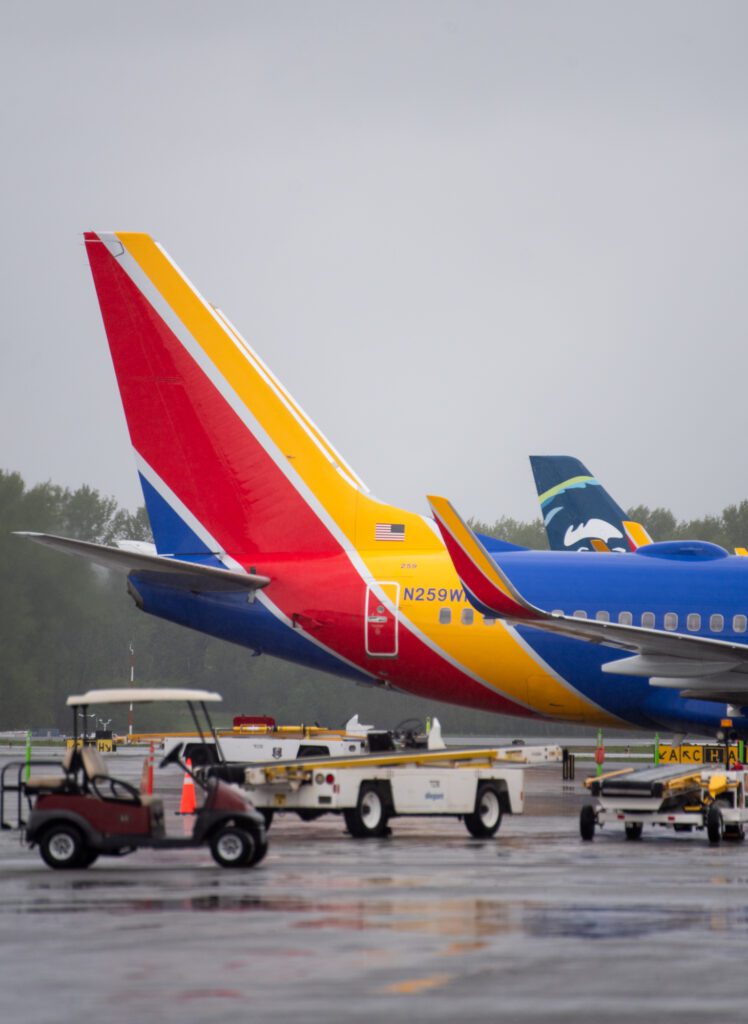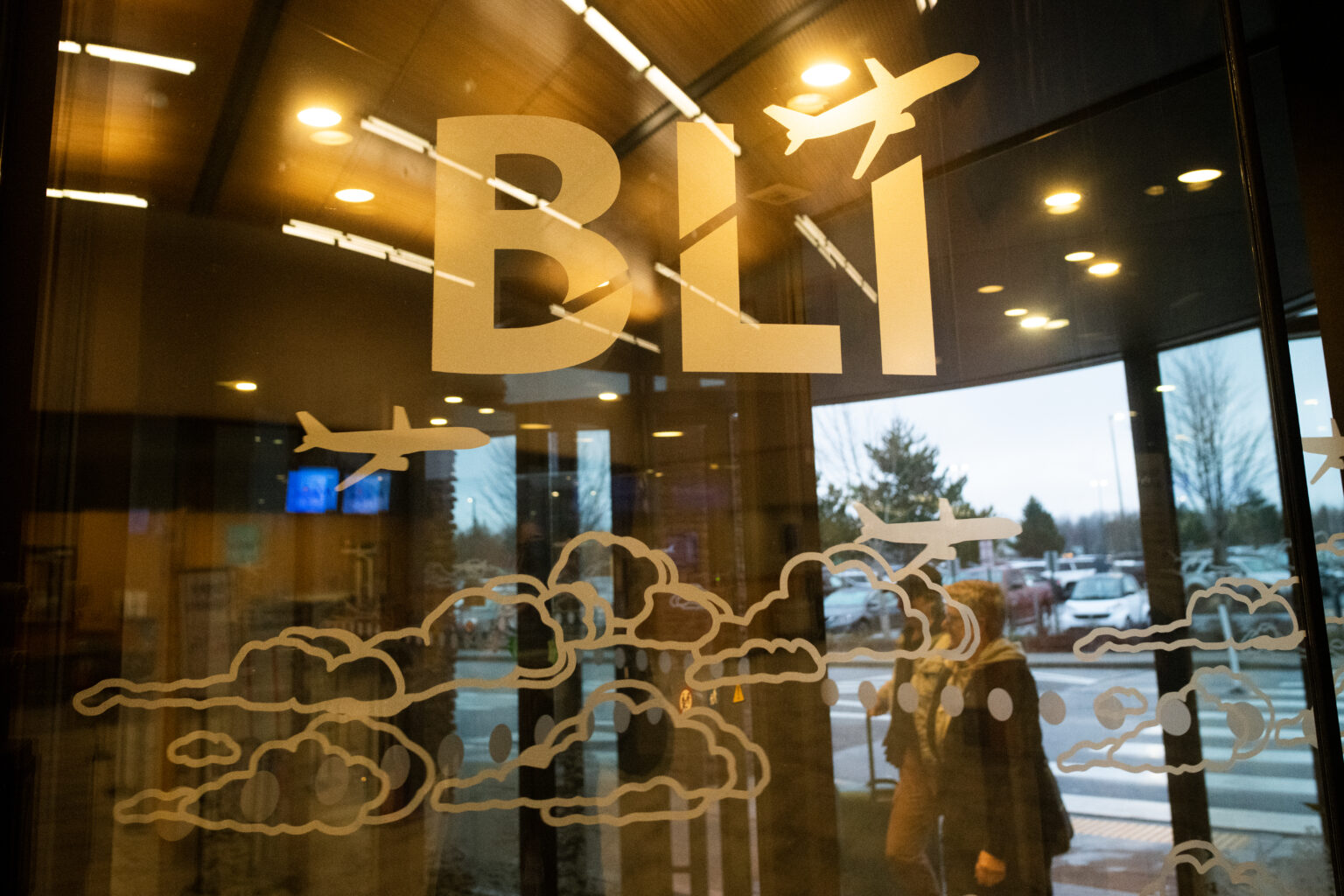Bellingham’s future as a significant airport in Northwest Washington may actually be a tale of three airports, perhaps five, all within a couple of hours’ drive and all jockeying to take advantage of airline growth strategies.
Yet of the five, only Bellingham International Airport has seen a continuing drop in passenger volumes over the past decade. That’s even after it spent tens of millions of dollars to improve its passenger terminal.

Factors outside of the airport’s control — fluctuating weakness in the Canadian dollar, shortages of planes and pilots, shifting airline strategies — appear to have contributed to the decline. It also could be tied to a lack of the “international” that’s embedded in the airport’s name for commercial passenger jets.
That last limitation is in the process of changing. But area alternatives for passenger service in Abbotsford, British Columbia and Paine Field in Everett, both similarly tucked between the more established commercial airports in Vancouver, B.C. and SeaTac, have not been standing still.
Losing number two carrier Southwest Airlines
Bellingham’s airport (BLI, in aviation shorthand) got a lot of attention in April when Southwest Airlines abruptly announced it would be ending all of its Bellingham flights effective Aug. 4. That left longtime stalwarts Alaska Airlines and Allegiant Air as the only remaining carriers with scheduled nonstop passenger jet service: Alaska to SeaTac three times daily, and Allegiant to Las Vegas, Phoenix/Mesa, Oakland, Los Angeles, Palm Springs and San Diego, but not all destinations daily or year-round.
Leaving a multi-colored, heart-shaped hole was the airport’s second-largest carrier that began operating at BLI in 2021 and grew to offer flights to Las Vegas, Oakland and Denver. Southwest said the primary reason for its departure was a lack of aircraft due to slow Boeing deliveries.
BLI also reaped more than $5 million in direct revenue from Southwest between 2021 and 2023.
At the June 18 meeting of Bellingham’s Port Commission, which oversees BLI, Director of Aviation Kip Turner said he was already having in-depth meetings with three potential new carriers, two which he said may be able to start service as soon as October.

Turner said in an interview that pitching airlines takes a lot of research and data on which routes are likely to be profitable and lead to full planes.
“We don’t just wake up and throw a dart and say, ‘That looks good. Let’s go for that,’” he said. “There’s a whole lot of homework that goes into it.”
But the upcoming exit of Southwest threatens to continue, at least for now, a steady decline in the number of passengers arriving and departing from a terminal that was dramatically expanded a decade ago.
An expansion in 2014 after peak year
In 2014, BLI completed a $38.5 million expansion project on the heels of a peak year in passenger volume. The number of boarding gates grew from two to the current five, along with three additional parking spots for commercial aircraft.
“I believe our market is still underserved and there is great potential for more eastbound-westbound airline routes,” Daniel Zenk, then-BLI’s airport director, told the industry publication Airport Improvement at that time. “We anticipate that over the next 20 years, we will be expanding the terminal further to the south and adding more gate space, terminal lobby space and vehicle parking.”
Instead, figures provided by BLI — in a trend confirmed by similar data from the U.S. Bureau of Transportation Statistics — showed arriving and departing passengers in 2014 of nearly 1,074,000 steadily declined over time to a pre-pandemic 2019 total of just over 678,000. In 2022, as air travel rebounded from pandemic lows, so did BLI’s numbers, to 658,000. But in 2023, BLI’s total dropped to 641,000.
[ Read more: Five years in, Paine Field public-private partnership a success ]
BLI’s trend is unique. Other commercial jet airports in the region have continued to see increasing passengers since the pandemic. The recently renamed Seattle Paine Field International Airport in Everett (PAE) said it went from 843,000 in 2019 (its partial first year of operation for passenger jet service) to 543,000 in 2022 and 637,000 in 2023. Abbotsford (YXX) steadily grew to 1,008,000 by 2019, then said it recovered after its COVID slowdowns to 993,000 in 2022 and 1,275,000 in 2023.
Point of comparison? SeaTac (SEA), the biggest airport by passenger volume in the region that reaches north to Vancouver, is nearly fully recovered to pre-pandemic levels: from 45 million in 2019 to 44 million in 2023, according to the Bureau of Transportation Statistics.
Fewer seats, shifting destinations
Carrier choices, potential competition and destination churn may explain much of BLI’s decade of decline.
Bellingham has the longest history of the region’s smaller airports for passenger jet service, dating back to 1985 and Pacific Southwest Airlines. In 1987, Horizon Air/Alaska Airlines started service and by 2004, Allegiant began flights.
But many airlines that once served BLI no longer do — or no longer exist. They include United Express, Delta, Frontier, Western, Skybus and USAir (which acquired PSA).

And in the past 10 years, destinations fluctuated dramatically as both Alaska and Allegiant ended flights to Hawaii from Bellingham, and Alaska ceased its nonstops to Las Vegas and Portland. Alaska also reduced the frequency of its flights to Seattle, which had been as many as five or six daily until fall 2022, when it transitioned from turboprops to small jets. Turner said airlines faced a shortage of pilots, fleet changes and a backlog of aircraft deliveries.
According to the 2019 Bellingham International Airport Master Plan Update, airline strategy was a contributing factor to declining passenger levels.
“By 2014 the passenger market at BLI had developed to the point where both airlines [Allegiant and Alaska] sought to better define the value of the market by raising ticket prices and reducing seating capacity to more profitable levels,” the update stated. The same report had concerns about increased low-cost carrier activity in Vancouver and Abbotsford, and the pending start of service at Paine Field.
Airport competition
Yet not as much of a factor today, according to BLI officials, is competition from the two other airports between Seattle and Vancouver.
Turner said a recently completed market study found that just 1.4% of Whatcom County travelers used PAE; of those who drive to other airports, 90% went to Seattle-Tacoma International. Paine Field, he said, isn’t a primary competitor.
“Our true competitor is Vancouver, Canada,” he said. “We are Vancouver’s U.S. airport. That’s where our largest market opportunity exists.”
For its part, PAE — with Alaska Airlines flights to 10 U.S. destinations including Anchorage and Honolulu — agrees.
“We consider Bellingham to be serving a different market and therefore they are not a competitor,” said Brett Smith, CEO of Propeller Airports, the private company that built and operates PAE’s commercial passenger terminal.
Also in agreement: Abbotsford International Airport, just across the border from Sumas in Whatcom County. Its flights on national carriers WestJet and Flair Airlines are focused on Canadian destinations such as Toronto as well as Mexico seasonally. None currently go to the U.S.

“We do have people flying out of Bellingham to Las Vegas and Palm Springs,” said Airport General Manager Parm Sidhu. “But we also have reciprocal people coming up to Abbotsford to fly to Ontario or to Edmonton or to Calgary.”
Overall, BLI’s Turner sees it all as a really large aviation pie, with the need also driven by capacity limits at the SeaTac airport.
“Honestly, with a population base of almost 4 million in a radius of 90 miles from the airport, which is what our catchment area is, we really don’t feel as we’re competing with this airport or this airport or this airport,” he said. “We really feel like, ‘Hey there’s plenty of pie, we just want to get our sections of it. We just want our piece of the pie.’”
Alaska Airlines, Allegiant roles
The two longtime carriers in Bellingham see benefits to BLI.
Alaska Airlines called both PAE and BLI “sizable” leisure markets, with PAE serving travelers north of Seattle and BLI feeding flights that leave from SEA.
While Alaska has consolidated Bellingham service to focus on its Seattle hub since 2019 and restored a third daily flight in March, “BLI represents an important piece of our network, and our planning team is continuously evaluating opportunities for network changes,” said Alaska Airlines spokesperson Ray Lane.
“We are taking a closer look at potentially adding more flights at Bellingham later this year based on Southwest’s exit from the airport,” he said.

Allegiant, which will mark 20 years at BLI in August, has both crew and aircraft based in Bellingham and said it’s dedicated to continuing service from the airport.
“Given its proximity to the Canadian border, BLI attracts loyal travelers from both sides, making it a key location for our customers looking for affordable travel options within the United States,” said Allegiant spokesperson Stephanie Garibay.
Aligning with airline strategy
Indeed, the June 18 presentation by Turner to the Port Commission cited improvements in BLI’s Canadian passenger draw, up to 56% of all outbound passengers in the year ending Q3 2023 from 53% in 2019. Turner also repeated an oft-cited reason for the appeal, even with an uneven exchange rate: the roughly $95 less in taxes and fees that ticketed passengers pay in Bellingham compared to Vancouver’s airport.
It’s a low-cost structure that Turner said is part of BLI’s pitch to airlines. Another part of that pitch is the detailed analysis, developed with the outside firm Volaire Aviation Consulting, that outlines routes with unmet demand, topped by flights to the Los Angeles basin (including Orange County) as well as Denver, Phoenix, Portland, Salt Lake City, Hawaii and Mexico.
One missing piece remains for the “international” in Bellingham International: an International Arrivals Terminal that can handle the volume of passengers on commercial jets. Turner said the airport is actively pursuing grants to finish the design and build out the terminal shell that already exists. As soon as that happens, Turner sees Mexico becoming a huge BLI market.
“We think we would be immediately in line for large charter operations at a minimum, If not some type of routine scheduled service,” he said.

But the success of all of it — the terminals, the analysis, the pitches — depends on aligning neatly with the one factor that is not under BLI’s control: the strategy of individual airlines.
“And that intersection point moves,” he said. “It literally moves sometimes every three to four months or every six months; it doesn’t stay the same.”
Once found, Turner appears confident BLI can support it.
“The airport could easily handle 10 times the current activity,” he said. “That doesn’t mean we have enough current passengers to support that many flights – but the airfield is positioned to handle growth for many decades to come.”
Frank Catalano writes about business and related topics for CDN; reach him at frankcatalano@cascadiadaily.com.




